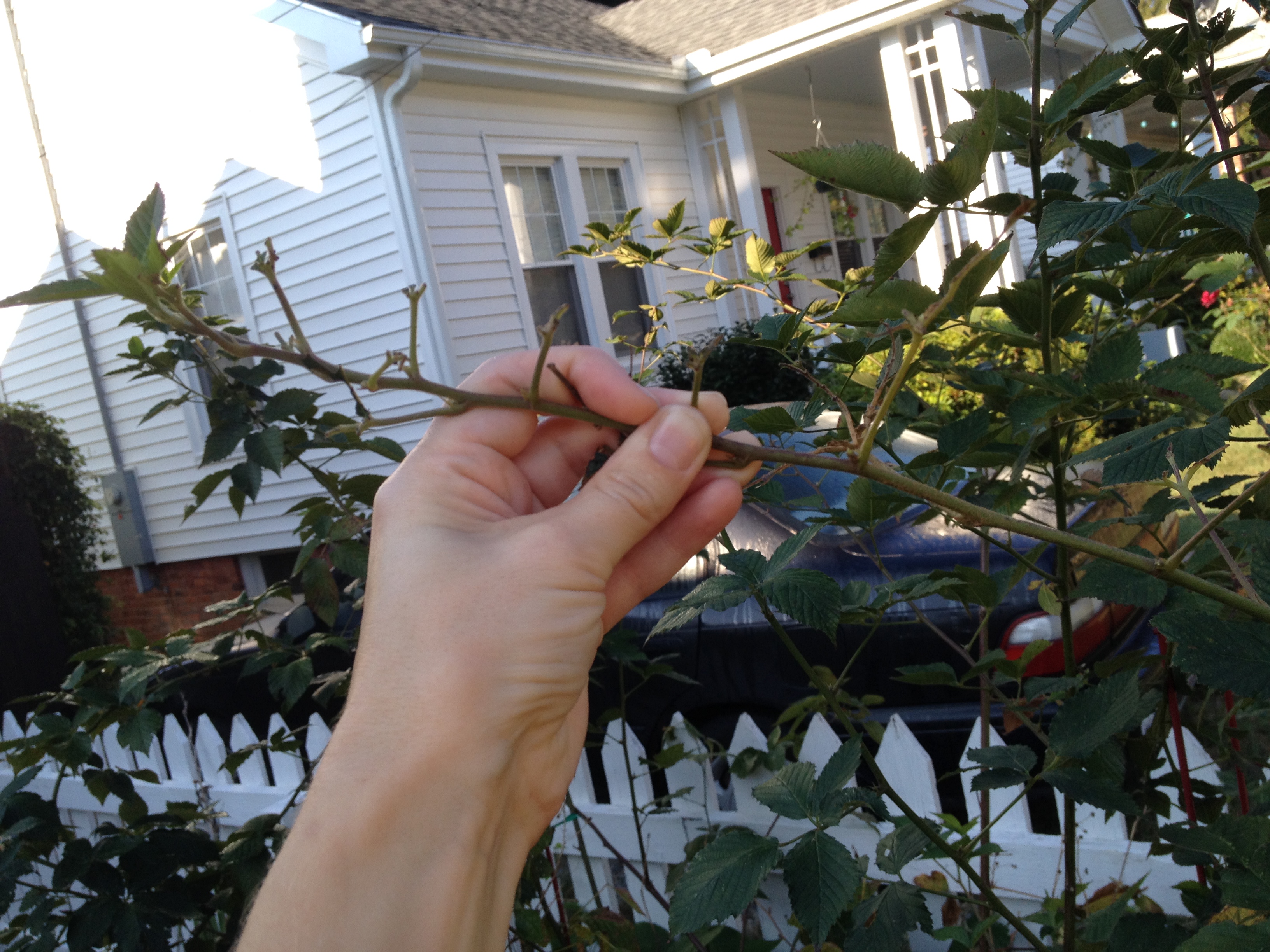What to Watch for – Caterpillars on Blackberries
go.ncsu.edu/readext?247460
en Español / em Português
El inglés es el idioma de control de esta página. En la medida en que haya algún conflicto entre la traducción al inglés y la traducción, el inglés prevalece.
Al hacer clic en el enlace de traducción se activa un servicio de traducción gratuito para convertir la página al español. Al igual que con cualquier traducción por Internet, la conversión no es sensible al contexto y puede que no traduzca el texto en su significado original. NC State Extension no garantiza la exactitud del texto traducido. Por favor, tenga en cuenta que algunas aplicaciones y/o servicios pueden no funcionar como se espera cuando se traducen.
Português
Inglês é o idioma de controle desta página. Na medida que haja algum conflito entre o texto original em Inglês e a tradução, o Inglês prevalece.
Ao clicar no link de tradução, um serviço gratuito de tradução será ativado para converter a página para o Português. Como em qualquer tradução pela internet, a conversão não é sensivel ao contexto e pode não ocorrer a tradução para o significado orginal. O serviço de Extensão da Carolina do Norte (NC State Extension) não garante a exatidão do texto traduzido. Por favor, observe que algumas funções ou serviços podem não funcionar como esperado após a tradução.
English
English is the controlling language of this page. To the extent there is any conflict between the English text and the translation, English controls.
Clicking on the translation link activates a free translation service to convert the page to Spanish. As with any Internet translation, the conversion is not context-sensitive and may not translate the text to its original meaning. NC State Extension does not guarantee the accuracy of the translated text. Please note that some applications and/or services may not function as expected when translated.
Collapse ▲Every fall around this time, I start to recieve calls about caterpillars feeding on blueberries and sometimes blackberries and raspberries. This year, however, they came to me! This morning, I noticed that the tips of several primocanes on the blackberries in my front yard were defoliated.

Blackberry primocane defoliated by caterpillar feeding. Photo: Hannah Burrack
A number of caterpillar species can feed on perennial plants in the late summer and fall. Of these generalists, those that affect blackberries, raspberries, and blueberries include yellow-necked caterpillars (Datana spp.), red-humped caterpillars (Schizura concinna), and even eastern tent caterpillars (Malacosoma americanum). A closer inspection revealed several red-humped caterpillars feeding on my plants. The common name for these caterpillars comes from the distinctive red, raised band around their fourth segment. The rest of their body is covered with yellow, white, and black stripes.

A cluster of red humped caterpillars (Schizura concinna) feeding on blackberry foliage. Photo: Hannah Burrack
Most of the caterpillars on my blackberries were close to mature, which I determined by looking at their heads. The head of a caterpillar doesn’t expand like their body. Therefore, it if the head appears small relative to the rest of the insect, they are likely to molt soon. These caterpillars appeared to the last larval molt–or “instar”.
Despite the fact that they were nearly mature, I still wanted to remove the caterpillars from my plants. The amount a caterpillar eats is proportional to their size, so caterpillars eat the most volume of plant tissue when they are their biggest–during their last instar.
How should you manage foliar-feeding caterpillars on berries?
Caterpillar populations are typically clustered on one or a few plants in an area. It’s likely that all the caterpillars on my plant hatched from eggs laid in a mass by a single moth. In commercial fields, this means that hand removal, selective pruning, or spot treatments are often the least costly and most effective means to manage caterpillars in the fall. See the NC Agricultural Chemicals Manual for recommended conventional and organicall acceptable materials. In the home garden, hand removal of the caterpillars is the easiest means of control. However, wear gloves with removing caterpillars as some of the species that feed on berries have irritating or stinging hairs! After removing the caterpillars from the plants, drop them in soapy water or step on them to kill them.
More information
What to watch for – Caterpillars in blueberries – NC Small Fruit & Specialty Crop Entomology


